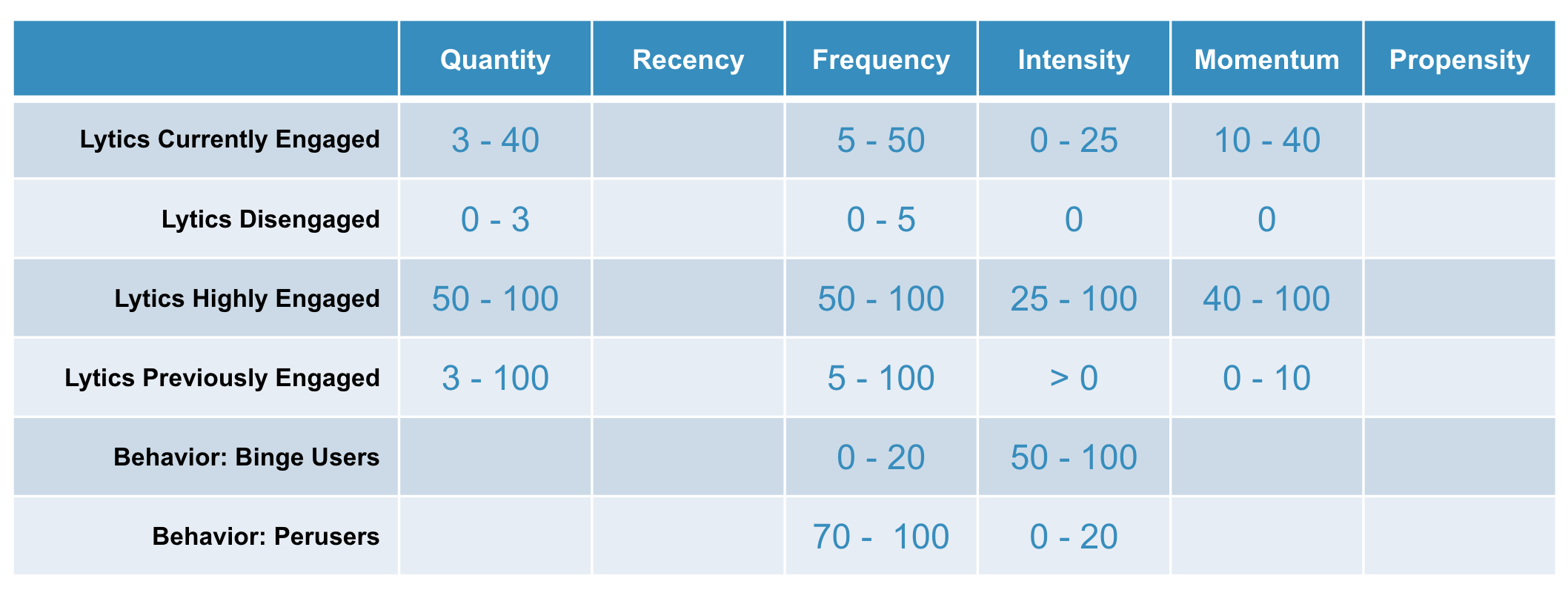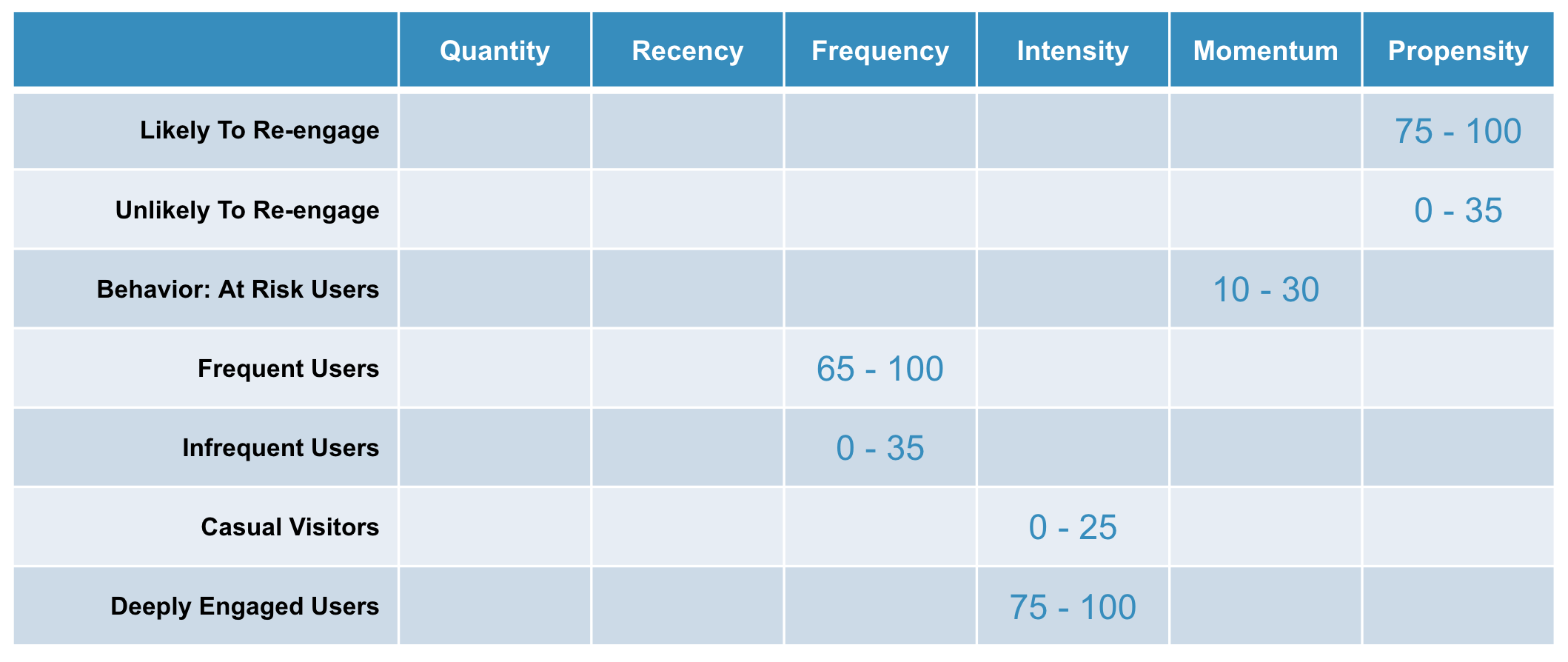Behavioral Audiences
Find out how the Connected Customer KPI allows you to monitor your identity resolution strategy.
What is behavioral segmentation?
What will I learn?
- What is behavioral segmentation? Why does it matter?
- What types of pre-built behavioral audiences are available?
- How are scores used to define Lytics behavioral audiences?
In this guide, we will describe how Lytics automatically surfaces behavioral audiences to help guide your marketing teams in understanding how to best engage with your customers.
Lytics looks at how your customers and prospects are interacting with your brand, across all your channels and tools including all purchases, product views, content consumption, or if they log into your app or your software.
Understanding your customers' engagement across all their actions enables Lytics to understand if someone is leaning in and ready for more interactions, or if they are at-risk of churning. Lytics automatically surfaces behavioral audiences to help guide your marketing teams in their understanding of when and how much to engage.
Lytics Behavioral Audiences
Out-of-the-box Behavioral Audiences
Lytics provides pre-built behavioral audiences for all accounts, using a blend of our behavioral scores under the hood to identify where users fall in a behavioral lifecycle. These Behavioral Audiences can be used alone or as a rule in any custom audience.
- Frequent Users: People who interact with your brand a lot.
- Infrequent Users: People who interact with your brand occasionally.
- Deeply Engaged Users: People who show a lot of activity when they do interact with your brand.
- Casual Visitors: People who show little activity when they do interact with your brand.
- Likely To Re-engage: People likely to come back based on their past activity patterns.
- Unlikely To Re-engage: People not likely to come back based on their past activity patterns.
- At Risk Users: People whose interaction behavior is changing for the worse.
- Binge Users: People who show a lot of activity when they do interact with your brand.
- Perusers: People who visit often but rarely interact deeply with your brand.
For more information, see our Behavioral Audiences documentation.
Tip: Behavioral Audiences are powerful building blocks. Keep in mind that Lytics scores are constantly updating in real time, so audiences based on these scores are highly effective at targeting customers according to their engagement with your brand. Stale audiences no more!
Optimize how you engage with customers
Targeting audiences based on behavioral properties is a great way to introduce different modes of communication for different archetypes of users. For instance, Casual Visitors may not stick around long enough to answer their own questions on your website, so you could try engaging them with a slide-out on early page visits.
The opposite of Casual Visitors, Deeply Engaged Visitors, are probably determined to find that information on their own and would find a popup to be annoying. Splitting the audience keeps both archetypes engaged without accidentally deterring anyone.
Audience Definitions with Scores
Here is the full set of behavioral audiences, with a breakdown of how Lytics Scores are used in under-the-hood audience definitions.
If you haven't completed the Academy module on Behavioral Scores yet, head there next to gain a deeper understanding of how Lytics calculates these scores.

Here's another set of parameters:

Next Up
Article
Connected Customer KPI
29s
